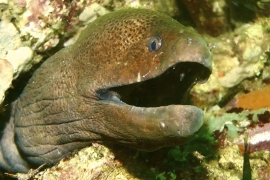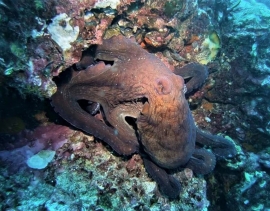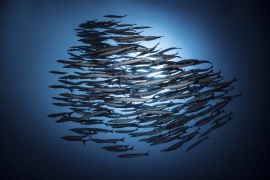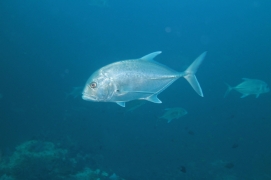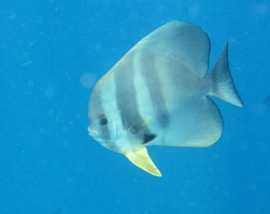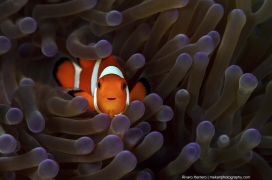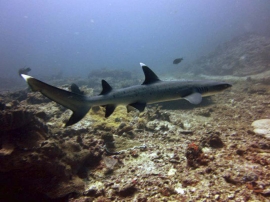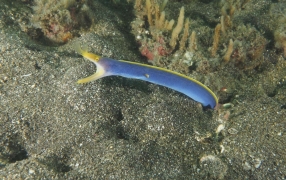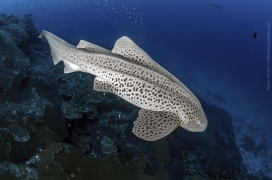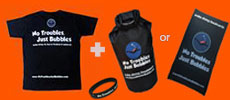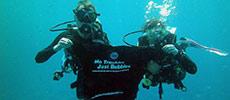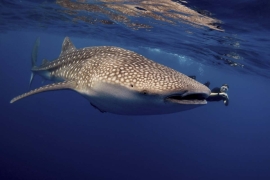
Myanmar/Burma
Myanmar used to be called Burma, and is a country in Southeast Asia located between Thailand & Bangladesh. Its western coastline is on The Andaman Sea, in The Bay of Bengal. Nutrient-rich water from The Indian Ocean brings plenty of food for the resident reef species as well as allowing access for pelagic migratory sharks, rays & fish. The crystal-clear tropical water has been out of bounds to foreigners for many years, but now scuba diving is possible in the southern aeas of Myanmar's coastline. To go diving in Burma, you need to join a liveaboard diving safari, and these usually depart from Ranong, in Thailand.
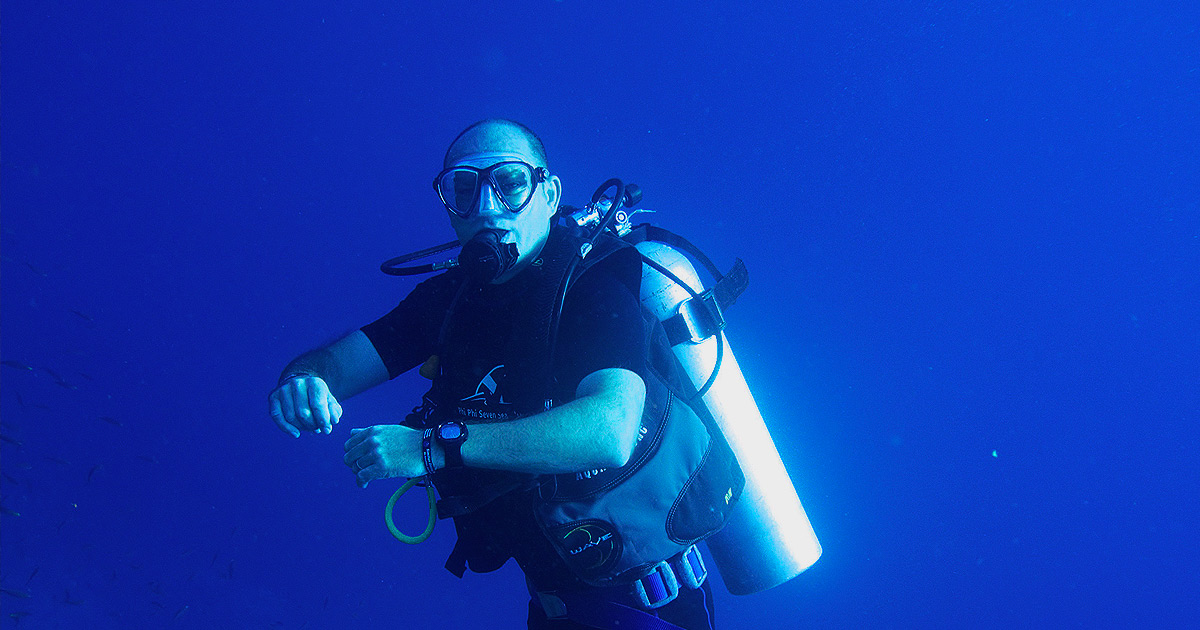
At present, The Mergui Archipelago and Burma Banks are the only area in Myanmar for scuba diving. This group of 800+ islands lies in Myanmar’s south and covers a vast area. Liveaboard boats are only able to visit a tiny fraction of this wonderful part of the world because of the distances which need to be covered. The Burma Banks are quite far out to the west, and although fantastic dive sites the distance is sometimes just too far for some trips. The area is vast, and most of the islands are uninhabited. And with very few liveaboard diving boats in Myanmar, most of the time you will only see nature, plus one or two fishing boats in the distance.
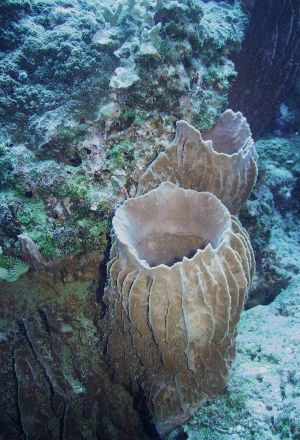 A pair of barrel sponges - Credit: Alex KiermayerA large part of the draw of diving in Burma is the feeling of remoteness, plus many dive sites are only partially explored and many haven't been discovered yet. So few people get to dive in Burma that you always get the feeling that you're pioneering some new adventure, instead of following a well-trodden path. Plus, compared to its neighbour, The Similan Islands, some species of marine life are found here and not in The Similans. This is partly due to them being shy, and easily scared off by the many boats and divers at Thailand's best diving area. But it's also because the location a little further out to sea and to the north.
A pair of barrel sponges - Credit: Alex KiermayerA large part of the draw of diving in Burma is the feeling of remoteness, plus many dive sites are only partially explored and many haven't been discovered yet. So few people get to dive in Burma that you always get the feeling that you're pioneering some new adventure, instead of following a well-trodden path. Plus, compared to its neighbour, The Similan Islands, some species of marine life are found here and not in The Similans. This is partly due to them being shy, and easily scared off by the many boats and divers at Thailand's best diving area. But it's also because the location a little further out to sea and to the north.
Liveaboard diving trips in Myanmar are usually at least six days long, and often as long as nice days. The islands and areas your liveaboard trip visits depends on the length of your chosen itinerary. Longer trips have the opportunity to venture further out to sea, and visit more-remote islands.
The Burma Banks are the big name for the best diving in Myanmar, but they are located more than 120 km out to sea, and offer no protection from wind or waves. It's quite a commitment to get there, due to fuel and if the weather picks up it can be unsafe for boats. Plus, there are not as many large sharks as there used to be in the 1990s. The banks are a series of submerged pinnacles rising up from more than 300 metres to approximately 15 metres from the surface. There are several of the 'banks' which have been named by the diving community, and these include Roe Bank, Heckford Bank, Rainbow Bank, Coral Bank, Big Bank & Silvertip Bank.
The diving areas of Mergui Archipelago in Myanmar which are most-commonly visited by diving liveaboards include, Black Rock, High rocky, Shark Cave, Stewart Island, North Twin, SouthTwin, Seafan Forest, Western Rocky, Volcano, Macleod Island, Tower Rock, Torres Island, The Sisters, Princep and several others.
Dive Sites in Myanmar/Burma
Myanmar's Mergui Archipelago is a group of more than 800 islands in The Andaman Sea. The area is just north of the west coast of Thailand, connected to the Indian Ocean. Most of these tropical islands are uninhabited, and all are surrounded by crystal-clear tropical sea. Scuba diving in Myanmar's Mergui Archipelago is limited to liveaboard trips, most of which start and finish in Thailand.
Conditions at Myanmar/Burma
When to dive at Myanmar/Burma
Scuba diving in Myanmar isn't really possible during the rainy season which is May to October. Although some trips go in November, it's normally better to wait until December, and go no later than April. This is due to potential upredictable weather and waves.
What type of dive site is Myanmar/Burma
Myanmar's Mergui Archipelago is mainly coral reefs around or near limestone islands, with some granite boulders as well. Currents can provide 'drift dives' at certain times of the month. Caves and swim throughs add some variety, as well.
Where is Myanmar/Burma?
Myanmar's Mergui Archipelago in on the east coast of the Andaman Sea, in The Bay of Bengal, which makes up the northeast corner of The Indian Ocean.
How to get to Myanmar/Burma
To dive in Burma (Myanmar) you first need to arrive in Ranong or Khao Lak the south of Thailand because most Myanmar liveaboard diving trips begin in Ranong and then cross to Myanmar at the border town of Kawthoung. Some guests are already in Myanmar, and prefer to join the liveaboard in Kawthoung, after it has made the short crossing, and this is normally possible.
Who can dive at Myanmar/Burma
Although there are no official rules or policies about the minimum diver cert level and experience for diving in Burma, you really need to be certified to 30 metres (99 feet) and have 50 dives' experience. The dive sites are remote and nearly every guest will have experience. Organising dive groups and selecting dive sites requires planning, and having one or two inexperienced guests makes this difficult.
What marine life can you see at Myanmar/Burma?
You can expect to see a wide range of species in Myanmar. From the smallest invertebrates and seahorses to the largest fish in the sea! There are large schools of pelagic and reef fish, and the chance of seeing Manta or Mobula Rays further west out into the open sea.
Summary of Myanmar/Burma
Scuba diving in Burma (Myanmar) is very special. Not only is it quite an adventure to get there, your liveaboard boat is likely to be the only one within sight, and the marine life is diverse and often special. Logistics to dive in Myanmar normally require arriving in southern Thailand first, then your liveaboard crosses the Burmese border. Very few boats offer diving there, and each has its own itinerary, meaning that it's extremely rare for two boats to be at the same dive site at the same time. And because it's quite far away and not busy, species which are usually scared off by crowds can be found more often than at Thailand's Similan Islands.


